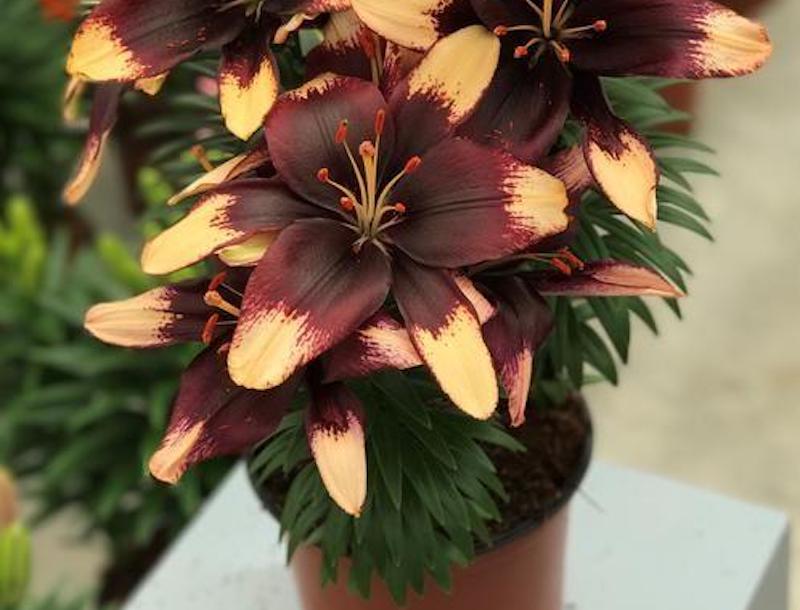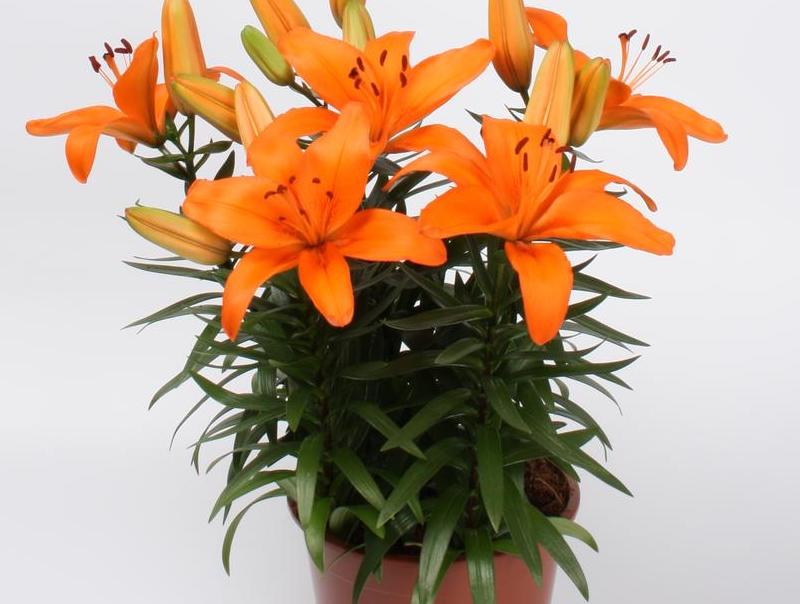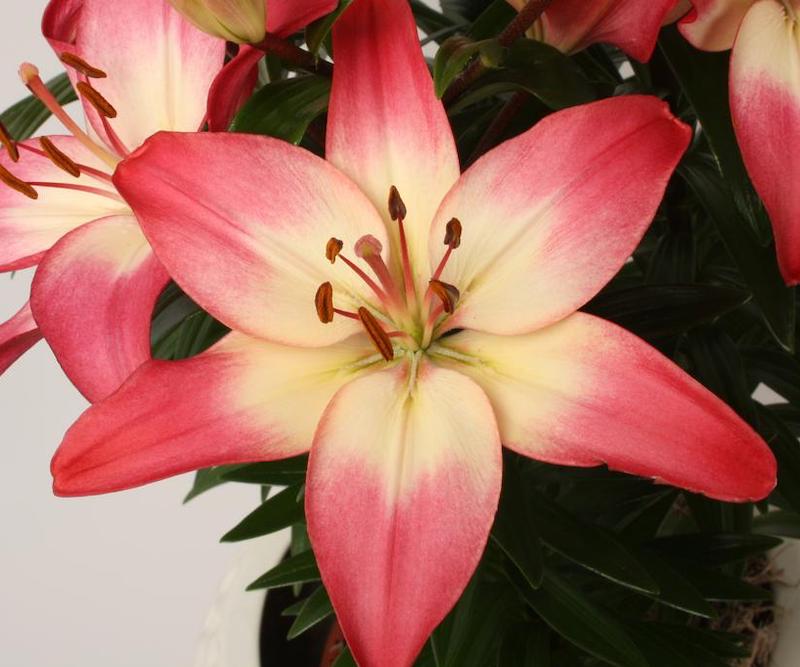Lilies can grow well in pots with proper care and attention. Place these beautiful flowers on a patio, balcony, garden, entryway, or deck. When planting lilies in pots, it is important to use well-draining soil and to water them regularly. They also need plenty of sunlight, so place them in an area with plenty of direct light. Lilies are an excellent choice for planters, as their vibrant blooms add a pop of color to any outdoor space. However, there may be better choices for hanging baskets, as their form may be too tall and vertical for this display.

Planting Lilies in Pots
The best time to plant lilies in pots is typically in early fall, although after the last frost in spring works too. When choosing a location for your potted lilies, it is crucial to consider the sunlight they will receive. Lilies thrive in full sun to part sun, but they can also tolerate some shade. Select an appropriately sized container; use an 9-inch container for a large, single bulb or 3 small bulbs. Ensure the planter has drainage holes to allow excess water to drain out, as lilies do not tolerate standing water. Use a planter made of weather-proof material if you plan to keep the container outdoors year round. Keep in mind that terracotta is generally not frost proof if you live in a climate with cold winters.

Best Soil For Lilies in Pots
Use a soil mix that is well draining and nutrient rich. A good quality potting mix or soil will provide the necessary nutrients and support for your lilies to grow and thrive. Adding compost to the soil can also be beneficial, as it helps to improve the soil structure and provide additional nutrients. It is important not to add rocks to the bottom of the pot, as this can impede drainage and cause the roots to rot. Instead, you can apply a light mulch to the top of the soil to help retain moisture and suppress weeds. Proper drainage is crucial for lilies in pots, so be sure to use a pot with drainage holes and elevate the container on pot feet or bricks.
Caring For Lilies in Planters
These beautiful flowers prefer full sun to part sun, so be sure to place them in an area that gets plenty of direct light. Watering lilies in planters regularly is important, but be sure not to overwater them, as they do not tolerate soggy soil. A well-draining soil is crucial to prevent root rot. Fertilize potted lilies with a fertilizer for bulbs--liquid formulas are easiest--to provide the necessary nutrients for growth. Deadhead the spent flowers to encourage new blooms, and remove any diseased or damaged foliage.
Watering Lilies in Pots
When watering lilies in pots, strike a balance between providing enough moisture yet not overwatering. Lilies prefer moist, well-draining soil, but they do not tolerate standing water. A good rule of thumb is to water your lilies every 3 days, or when the top inch of soil feels dry. Be sure not to let the soil become overly saturated, as this can lead to bulb rot or other problems. Using rainwater is a great way to water your lilies, as it is free of chemicals and is the perfect pH for plants. During periods of drought, you may need to water your lilies more frequently to ensure they have enough moisture. It is also a good idea to mulch around the base of the plant to help retain moisture and suppress weeds.
Fertilizing Lilies in Pots
Apply a fertilizer formulated for bulbs every 2 to 4 weeks to provide the right balance of nitrogen, phosphorous, and potassium. It is important to follow the instructions on the fertilizer label, as over-fertilizing can lead to problems such as leaf burn or reduced blooms. Lilies in pots may need to be fertilized more often than those planted in the ground, as pots have a limited amount of soil and nutrients. Fertilizing helps to replenish these nutrients and support the growth of the plant. Without proper fertilizing, lilies in pots may struggle to thrive and may not produce as many blooms over time.
Winter Care For Lilies in Pots
Winter care for lilies in pots is crucial to ensure their survival through the cold months. Lilies in pots may need extra protection from the elements, such as frost covers or mulch. This can involve cutting back the spent foliage, adding mulch, and providing extra insulation around the pot. It is also important to protect the pots themselves, as freezing temperatures can cause them to crack or break. If you live in a climate with cold winters, you may want to store your pot in a protected area like a garage or shed. If bringing the plants indoors, be sure to place them in unheated area because they typically need a period of cold dormancy to flower well.

Growing Lilies Indoors
Lilies can be grown indoors as a houseplant, although they may not bloom as prolifically as they would outdoors. These beautiful flowers need a cool location (68 degrees Fahrenheit or less) and at least 6 hours of direct sunlight per day, ideally next to a south-facing window. Lilies also prefer moist, well-draining soil and should be watered regularly, but be sure not to overwater them. Fertilize your lilies with a low-nitrogen formula every 2 to 4 weeks to support healthy growth and blooming. Lilies do not necessarily need to go dormant when grown indoors, but they may benefit from a period of rest during the winter months. To simulate dormancy, you can reduce watering and fertilizing, and place the plant in a cooler location, around 50 degrees Fahrenheit. By following these care techniques, your lilies should be able to thrive indoors and bring a touch of beauty to your home.
 |
Author Chris Link - Published 1-27-2023 |
